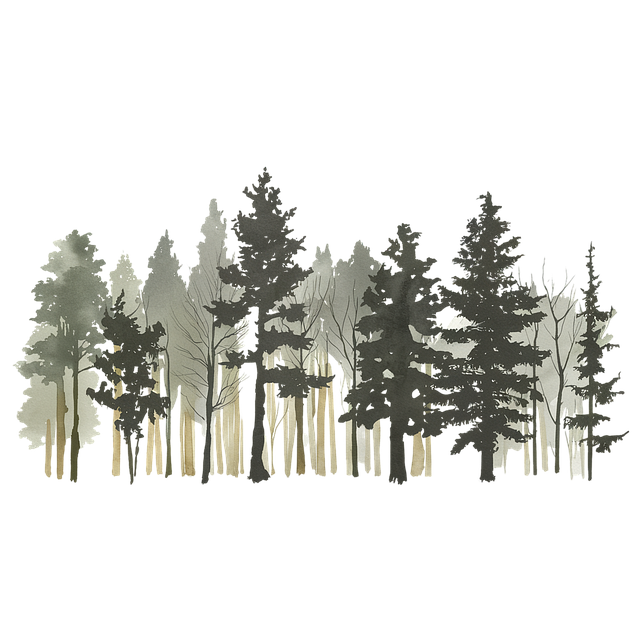In Plano, Texas, hiring a Tree Surgeon Plano TX is crucial for property safety and aesthetic appeal. Regular inspections identify potential hazards, and these professionals decide whether to save or remove trees. Timely removal prevents accidents and promotes property health. Selecting a reputable tree surgeon with experience in various tree types and services is vital. Assessing tree health, size, and location, along with local regulations, ensures safe removal. Skilled arborists prioritize safety, using proper PPE and equipment. Diverse tree species require specific considerations for safe removal. Post-removal care includes clearing, ground repair, patching, and planting to restore the landscape's beauty and health.
“In the vibrant landscape of Plano, Texas, maintaining your property’s beauty and safety often involves thoughtful tree management. This article guides you through the essential aspects of tree removal, a crucial service provided by skilled Tree Surgeons in Plano, TX. From understanding when to remove a tree to navigating safety measures and evaluating your property, we offer insights for informed decisions. Discover the considerations for common local tree species and learn about post-removal care, ensuring your property thrives after professional tree surgical services.”
- Understanding Tree Removal: When and Why It's Necessary
- Identifying the Right Tree Surgeon in Plano, TX
- Evaluating Your Property for Tree Removal Projects
- Safety Measures During Tree Removal Processes
- Common Tree Species in Plano and Their Removal Considerations
- Post-Removal Care: Revitalizing Your Property After Tree Surgical Services
Understanding Tree Removal: When and Why It's Necessary

When it comes to maintaining your property in Plano, Texas, understanding when and why tree removal is necessary is crucial. A qualified Tree Surgeon Plano TX plays a vital role in assessing and managing trees that pose potential risks to your home, family, or surrounding structures. Dead, diseased, or damaged trees can become hazardous, especially during severe weather conditions, as they are prone to falling and causing significant damage.
Regular inspections by a tree care professional help identify these issues early on. They possess the expertise to determine if a tree can be saved through pruning and other treatments or if removal is the safest and most practical option. Timely tree removal not only prevents accidents but also ensures your landscape remains safe, healthy, and aesthetically pleasing.
Identifying the Right Tree Surgeon in Plano, TX

When it comes to choosing a tree surgeon in Plano, TX, it’s crucial to select a professional who possesses both the skills and expertise to handle your tree care needs safely and effectively. Start by considering their experience—a seasoned tree surgeon will have encountered various challenges and can offer tailored solutions for different types of trees. Look for someone who is licensed and insured, ensuring you’re protected in case of any unforeseen issues during the removal process.
Reputation is also key; read reviews from past clients to gauge their satisfaction levels. A reputable Tree Surgeon Plano TX will prioritize communication, providing transparent estimates and explaining procedures clearly. They should be equipped to handle a range of services, including tree pruning, trimming, removal, and even emergency services for fallen trees. Choose a surgeon who demonstrates a commitment to both the health of your trees and safety protocols to ensure the best outcome for your property.
Evaluating Your Property for Tree Removal Projects

When considering tree removal in Plano, TX, assessing your property is a crucial first step. A qualified tree surgeon Plano TX will start by evaluating factors like the tree’s health, size, and location on your land. They’ll consider if it poses risks to nearby structures or power lines and discuss potential solutions like pruning instead of full removal.
This evaluation goes beyond visual inspection. The expert will account for local regulations and safety protocols. Understanding these aspects ensures compliance with city codes and guarantees the job is done safely and responsibly, regardless whether you’re dealing with a diseased tree or one that’s simply grown too large for your space.
Safety Measures During Tree Removal Processes

When a tree removal surgeon in Plano, TX, takes on a project, safety is of utmost importance. Proper precautions are essential to protect both the professionals and nearby properties or individuals. Before any cutting begins, skilled arborists will assess the situation, considering factors like weather conditions, proximity to structures, power lines, and other potential hazards. They’ll don appropriate personal protective equipment (PPE), including helmets, safety glasses, ear protection, and robust clothing, ensuring they’re prepared for any unexpected events during the removal process.
The tree surgeon will employ specialized tools and techniques tailored to the job, such as chainsaws and aerial lift equipment, operated with meticulous care. They’ll follow strict protocols to prevent accidents, like maintaining clear paths and securing bystanders in designated safe zones. Regular communication among team members is vital to ensure everyone is accounted for and aware of changing circumstances during the tree removal process, making it a seamless and secure operation for all involved.
Common Tree Species in Plano and Their Removal Considerations

Plano, Texas, is home to a diverse range of tree species due to its mild climate and abundant green spaces. When it comes to tree removal, understanding the specific needs and considerations for each type is crucial. Common trees in the area include oak, maple, birch, and pine varieties. These species all have unique characteristics that impact removal processes.
For instance, live oaks are a prominent feature in many Plano neighborhoods, known for their long lifespan and sturdy branches. However, due to their size and potential hazard of falling leaves and branches, removing a live oak requires specialized equipment and expertise. On the other hand, maples and birches can be more susceptible to diseases like Dutch elm disease, making prompt removal necessary to prevent the spread. Pine trees, while valuable for shade and aesthetic appeal, may require careful consideration during removal due to their resinous nature and potential spike in insect activity post-removal. A qualified Tree Surgeon Plano TX professionals are well-versed in these considerations and can ensure safe, efficient tree removal for any species.
Post-Removal Care: Revitalizing Your Property After Tree Surgical Services

After a tree removal service by a qualified Tree Surgeon Plano TX, proper post-removal care is crucial to revitalizing your property. The first step involves clearing the area thoroughly, removing any debris or remaining branches to ensure safety and aesthetics. Next, assess the ground for any signs of damage caused during the removal process and address them promptly. This might include patching up holes, re-sodding, or replanting to restore the natural beauty of your landscape.
Encourage new growth by preparing the soil with organic matter and selecting suitable plants that complement your property’s existing features. Regular maintenance, such as trimming any sprouting branches and monitoring for pest infestations, will help keep your space looking its best. Remember, proper post-removal care not only enhances the visual appeal of your property but also contributes to a healthier environment for years to come.
When considering tree removal, it’s vital to partner with a qualified Tree Surgeon Plano TX. By understanding when and why removal is necessary, evaluating your property, prioritizing safety, and knowing common species and their unique removal considerations, you can ensure a successful project. After the surgery, proper post-removal care will help revitalize your property, fostering a healthier and more vibrant landscape moving forward.






